A standard 1942 dime is worth a few dollars, but value increases significantly with mint marks and errors. Coins with “D” (Denver) or “S” (San Francisco) mint marks are more desirable, with uncirculated examples exceeding $100. The most valuable are 1942/1 overdate varieties from Philadelphia and Denver, worth hundreds to thousands of dollars. Other valuable errors include doubled dies ($25-$500), off-center strikes ($15-$200), and brockages ($100-$500). To identify valuable coins, examine the date closely for overdates, check for mint marks on the reverse, and look for doubling. Condition matters greatly, with Full Bands designation and uncirculated status commanding premium prices.
That ordinary-looking 1942 Mercury dime sitting in your change jar could be worth anywhere from a few dollars to several thousand. The difference comes down to three critical factors: mint mark location, specific minting errors, and condition grade. Understanding these variables transforms pocket change into potentially valuable numismatic assets, especially when rare overdate varieties enter the equation.
Understanding the 1942 Mercury Dime Basics
The 1942 Mercury dime represents one of the final years of this iconic series designed by Adolph Weinman. Three mints produced these coins in 1942: Philadelphia (no mint mark), Denver (D mint mark), and San Francisco (S mint mark). The mint mark appears on the reverse side, positioned to the left of the torch base near the first “E” in “ONE DIME.”
Philadelphia struck over 205 million pieces in 1942, making it the highest mintage year. Denver produced approximately 60 million coins, while San Francisco contributed around 49 million. These production numbers directly influence today’s values, though condition and errors matter far more than mintage figures alone.
Standard circulated examples across all three mints typically trade between $2.50 and $5.00, reflecting their 90% silver content plus a small numismatic premium. However, this baseline value represents just the starting point for 1942 dimes.
Values Across Different Mint Marks
Philadelphia Issues (No Mint Mark)
Standard 1942 dimes from Philadelphia carry modest premiums in average circulated grades. A coin grading Good-4 brings approximately $2.75, while Fine-12 examples reach around $3.50. The value accelerates significantly in uncirculated conditions.
Mint State specimens without the Full Bands designation typically range from $15 to $45 depending on specific grade. An MS-63 example sells for approximately $22, while MS-65 specimens command $65 to $85. Coins exhibiting Full Bands (FB) designation—showing complete horizontal bands across the fasces on the reverse—multiply these values substantially. An MS-65 FB Philadelphia 1942 dime reaches $250 to $350.
Denver Mint Specimens (D Mark)
Denver-minted 1942 dimes carry slightly higher collector interest due to lower mintage. Circulated grades mirror Philadelphia values closely, ranging from $2.75 in Good-4 to $4.00 in Fine-12 condition.
Uncirculated Denver examples show more pronounced premiums. MS-63 coins trade around $30, representing roughly 35% more than Philadelphia counterparts. MS-65 specimens without Full Bands reach $90 to $110, while MS-65 FB examples command $300 to $400. The Denver mint’s reputation for sharper strikes makes Full Bands designation more achievable, increasing collector demand.
San Francisco Production (S Mark)
San Francisco 1942 dimes occupy a middle ground between Philadelphia and Denver issues. With the second-lowest mintage among the three facilities, these coins attract steady collector attention.
Circulated S-marked dimes trade identically to other mints at $2.75 to $4.00 across typical grades. MS-63 uncirculated examples sell for $28 to $32, while MS-65 pieces reach $85 to $95. Full Bands specimens at MS-65 grade command $275 to $375, slightly below Denver equivalents but above Philadelphia values.
| Grade | No Mint Mark | D Mint | S Mint |
|---|---|---|---|
| Good-4 | $2.75 | $2.75 | $2.75 |
| Fine-12 | $3.50 | $4.00 | $3.75 |
| MS-63 | $22 | $30 | $28 |
| MS-65 | $75 | $100 | $90 |
| MS-65 FB | $300 | $375 | $325 |
The Valuable 1942/1 Overdate Varieties
The 1942/1 overdate represents the crown jewel of 1942 Mercury dimes. This variety occurred when the United States Mint accidentally used 1941-dated dies that were overpunched with a 1942 date. The underlying “1” from 1941 remains partially visible beneath the “2” in 1942, creating a distinctive doubled appearance when examined under magnification.
Philadelphia 1942/1 Overdate
The Philadelphia overdate variety ranks among the most sought-after Mercury dimes. Even heavily circulated examples in Good-4 condition command $650 to $800. Fine-12 specimens reach $950 to $1,200, while Extremely Fine-45 coins trade between $1,400 and $1,800.
Uncirculated examples multiply these values dramatically. MS-63 Philadelphia 1942/1 overdates sell for $3,500 to $4,500. MS-65 specimens reach $7,000 to $9,000, while gem MS-66 examples have sold for $15,000 to $18,000 at major auctions. Heritage Auctions reported a record sale of an MS-67 Philadelphia 1942/1 overdate for $29,900 in January 2023.
Denver 1942/1-D Overdate
The Denver overdate variety carries even greater rarity and value. Collectors consider this the ultimate 1942 Mercury dime, with significantly fewer surviving examples than the Philadelphia counterpart.
Good-4 grade Denver overdates start around $800 to $950. Fine-12 examples reach $1,300 to $1,600, while Extremely Fine-45 specimens command $2,200 to $2,800. The value progression continues aggressively through uncirculated grades.
MS-63 Denver 1942/1-D overdates trade between $5,500 and $7,000. MS-65 examples reach $12,000 to $16,000. Gem MS-66 specimens have sold for $25,000 to $32,000. Stack’s Bowers Galleries recorded a remarkable $63,250 sale for an MS-67+ Full Bands Denver overdate in March 2023, establishing a benchmark for this legendary variety.
The overdate error shows most clearly when examining the date with 5x to 10x magnification. The “1” from 1941 appears as a vertical line beneath and slightly to the left of the final “2” in 1942. Both varieties also typically display slight doubling in the “194” portion of the date.
Other Valuable Error Types
Doubled Die Varieties
Doubled die errors occur when the die shifts slightly between hub impressions during manufacturing. On 1942 Mercury dimes, doubling appears most prominently in the date and the word “LIBERTY.”
Minor doubled die varieties with slight doubling visible only under magnification typically add $25 to $75 to a coin’s base value. Moderate doubling visible to the naked eye pushes values to $100 to $250 depending on grade. Major doubled die errors showing dramatic separation in letters or numbers command $300 to $600 in circulated grades and exceed $1,000 in mint state conditions.
A particularly strong 1942 doubled die obverse sold through GreatCollections for $1,450 in MS-64 grade during August 2023. The doubling appeared distinctly in “LIBERTY” and throughout the date numerals.
Off-Center Strikes
Off-center errors happen when the blank planchet isn’t properly centered between dies during striking. The resulting coin shows partial design with blank crescent-shaped areas.
Minor off-center strikes showing 5% to 10% displacement with full date visible trade for $15 to $40. Moderate examples at 15% to 25% off-center reach $50 to $125. Dramatic specimens displaying 30% to 50% displacement with date visible command $150 to $300.
The most valuable off-center 1942 dimes show approximately 40% to 45% displacement while retaining the complete date. These specimens can reach $400 to $650 depending on overall condition. A 1942-D Mercury dime struck 50% off-center sold for $720 at Heritage Auctions in November 2023.
Die Clash Errors
Die clashes occur when upper and lower dies strike each other without a planchet between them. This creates ghosted impressions of one side’s design transferred to the opposite side.
Light die clash errors showing faint transferred details add $5 to $15 to a coin’s value. Moderate clashes with clearly visible transferred design elements reach $20 to $45. Strong die clashes displaying dramatic ghosting throughout the fields command $50 to $125 in circulated grades and $150 to $300 in uncirculated conditions.
Brockage Errors
Brockage errors represent some of the most visually striking mint mistakes. A brockage occurs when a freshly struck coin adheres to a die, then strikes the next planchet. This creates a mirror image of one side impressed into what should be the opposite design.
Partial brockages showing mirror imaging affecting 25% to 50% of one side typically sell for $100 to $250. Full brockages with complete mirror imaging reach $300 to $600 in circulated grades. Uncirculated examples command $650 to $1,200, with exceptional specimens exceeding $2,000.
A 1942 Mercury dime with nearly complete reverse brockage achieved $1,875 at a Stack’s Bowers auction in February 2023, graded AU-58 with sharp mirror imaging across the entire reverse.
| Error Type | Minor | Moderate | Major |
|---|---|---|---|
| Doubled Die | $25-$75 | $100-$250 | $300-$1,000+ |
| Off-Center | $15-$40 | $50-$125 | $150-$650 |
| Die Clash | $5-$15 | $20-$45 | $50-$300 |
| Brockage | $100-$250 | $300-$600 | $650-$2,000+ |
Identifying Authentic Varieties and Errors
Examining for Overdate Varieties
The 1942/1 overdate requires careful examination under proper lighting and magnification. Position the coin under a bright LED light at a 45-degree angle. Use a 10x jeweler’s loupe focused on the date area.
Look for a clear vertical line representing the “1” from 1941 beneath the final “2” in 1942. This line should appear consistently across multiple viewing angles. Genuine overdates also display slight doubling throughout “194” in the date. The underlying “1” typically shows most prominently at the lower portion of the “2” in 1942.
Be cautious of post-mint damage that mimics overdate characteristics. Genuine overdates show the underlying digit as part of the die, creating smooth, raised metal. Scratches or tooling marks appear as disruptions to the coin’s surface with different texture and luster.
Locating Mint Marks Properly
Mint marks on 1942 Mercury dimes appear on the reverse, not the obverse like many modern coins. Position the coin with the torch upright and Liberty head down. The mint mark sits to the left of the torch’s base, near the first “E” in “ONE DIME.”
A “D” indicates Denver production, while “S” marks San Francisco origin. Philadelphia coins carry no mint mark—absence of any letter in this location confirms Philadelphia mintage. Use 5x magnification to distinguish between no mint mark and a weakly struck mint mark.
Some circulated coins show wear that partially obscures mint marks. Rotate the coin under raking light to reveal remnant outlines of worn letters. Denver “D” marks show characteristic rounded loops even when worn, while San Francisco “S” marks retain curved terminals.
Detecting Doubled Dies Accurately
Authentic doubled dies show complete doubling of design elements in a consistent direction. Examine “LIBERTY,” the date, and “IN GOD WE TRUST” with 10x to 20x magnification. Genuine doubling appears as complete secondary images slightly offset from the primary strike.
Machine doubling—a worthless form of post-strike damage—shows as flat, shelf-like extensions without complete secondary images. True doubled dies display raised, rounded doubling that matches the relief of the primary strike. The doubled elements should show identical depth and sharpness as the main design.
Check multiple design elements. A genuine doubled die variety affects several features in the same direction and degree. Random doubling in inconsistent directions suggests damage rather than a true doubled die error.
Recognizing Legitimate Off-Center Strikes
Authentic off-center strikes display a characteristic blank crescent area where the planchet extended beyond the dies. The struck portion shows normal design details with full sharpness. The dividing line between struck and unstruck areas appears as a clean, curved edge.
Measure the percentage of displacement by estimating how much of the design remains visible. Professional graders typically express off-center percentages in 5% increments. A coin showing roughly half the normal design appears 50% off-center.
Verify that the date remains visible for maximum value. Off-center strikes without visible dates typically sell for 40% to 60% less than dated examples. The presence of the mint mark also affects value significantly on Denver and San Francisco specimens.
Professional Grading Considerations
Understanding the Full Bands Designation
The Full Bands designation dramatically increases 1942 Mercury dime values. This special notation applies only to coins showing complete, unbroken horizontal bands across the fasces bundle on the reverse.
Examine the fasces—the bundle of rods bound together—positioned between the olive branch and oak branch. The bands appear as horizontal lines wrapping around the rod bundle. Count the bands carefully; a Full Bands designation requires all horizontal bands to show complete separation with no merging or weakness.
Even a tiny area of weakness disqualifies a coin from FB designation. Professional grading services like PCGS and NGC maintain strict standards, rejecting coins with even microscopic band interruptions. This stringent requirement explains why Full Bands examples command premiums of 200% to 400% over non-FB counterparts in the same numerical grade.
Approximately 15% to 20% of uncirculated 1942 Philadelphia dimes qualify for Full Bands designation. Denver coins achieve FB status about 20% to 25% of the time due to generally sharper strikes. San Francisco percentages fall between these figures at 17% to 22%.
When Professional Grading Makes Financial Sense
Submitting coins for professional grading costs $20 to $100 depending on service level and turnaround time. This investment makes sense when the difference between raw and graded values exceeds the submission cost plus shipping and insurance.
For standard 1942 Mercury dimes without errors, professional grading becomes worthwhile when the coin grades MS-64 or higher. An MS-65 coin gains approximately $30 to $50 in value when certified, covering the grading cost and generating modest profit. Full Bands candidates justify grading at MS-63 and above due to substantial premiums.
All 1942/1 overdate varieties deserve professional authentication and grading regardless of condition. The prevalence of counterfeits and altered dates makes third-party certification essential for marketability. An uncertified overdate typically sells for 40% to 60% less than an identical certified example due to authentication concerns.
Error varieties including doubled dies, significant off-center strikes, and brockages warrant professional grading when they appear to grade Fine-12 or better. The certification authenticates the error and establishes its severity, both critical factors in determining fair market value.
Maximizing Value When Selling
Smart sellers research recent auction results before listing 1942 Mercury dimes. Check Heritage Auctions, Stack’s Bowers, and GreatCollections for comparable sales within the past six months. These realized prices provide realistic value expectations far more accurate than published price guides.
For common-date examples worth under $100, local coin shops offer convenient transactions despite paying wholesale prices typically 60% to 75% of retail value. Online marketplaces like eBay reach broader audiences but involve fees of 12% to 15% and require careful photography and description writing.
Rare varieties including overdates and significant errors deserve consignment to major auction houses. These venues attract serious collectors willing to pay premium prices for certified, authenticated specimens. Auction houses typically charge 10% to 20% seller’s fees but achieve retail or above-retail prices that more than compensate for commission costs.
Start examining those old dimes today—your next inspection might reveal a four-figure overdate hiding in plain sight among ordinary pocket change.
You may be interested:
- 1859 Indian Head Penny Coin Value Complete Errors List And No Mint Mark Worth Guide For Collectors
- 1911 V Nickel Coin Value Guide Complete Errors List And No Mint Mark Worth Today
- 1902 Dime Coin Value Complete Errors List With O S And No Mint Mark Worth Guide
- 1788 Quarter Coin Value Complete Guide Errors List And D S P Mint Mark Worth Revealed
- 1776 To 1976 Bicentennial Half Dollar Coin Value Complete Errors List And What Your D S And No Mint Mark Coins Are Actually Worth
- 1990 Penny Coin Value Errors List How D S And No Mint Mark Pennies Are Worth Thousands Of Dollars

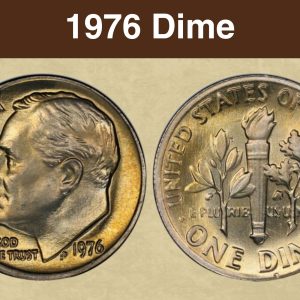
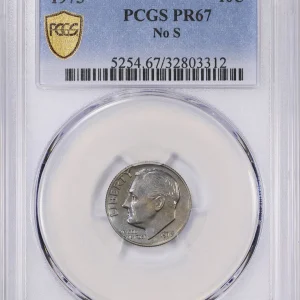
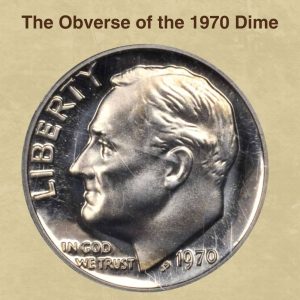
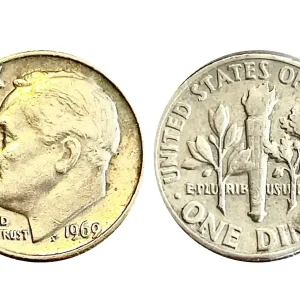
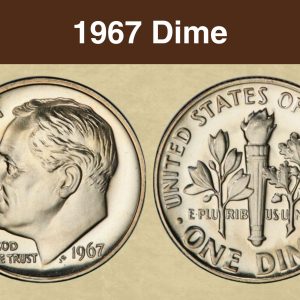
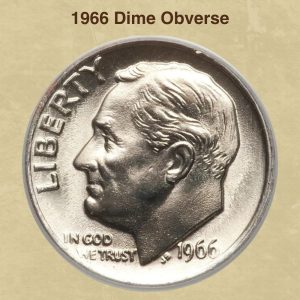
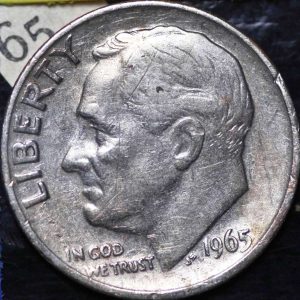
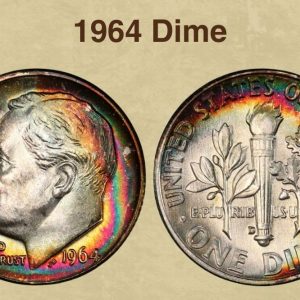
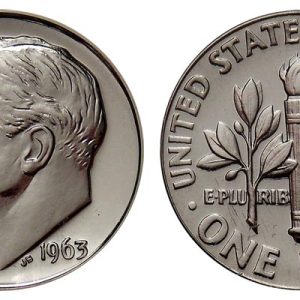
What is a 1942 dime worth with no mint mark?
A 1942 dime with no mint mark is generally worth a few dollars in circulated condition, but a value of $4.60 to $7 is a good estimate for circulated examples, as provided by NGC. Values increase significantly for uncirculated coins, and certain rare error coins like a 1942/1 overdate can be worth hundreds or even thousands of dollars.
What is the error on a 1942 dime?
The most valuable and well-known error on a 1942 dime is the 1942/1 overdate (also called 42 over 41), where a 1941 die was used to strike the 1942 date, resulting in a visible “1” under the “2”. Other errors include doubled dies on the date or letters, inverted mint marks on the 1942-S dime, and various die breaks or clipped planchets. The value of a 1942 dime error can vary significantly, from hundreds to tens of thousands of dollars, depending on the specific error and the coin’s condition…
How can you tell if you have a 1942 1D Mercury dime?
To identify a 1942/1 Mercury Dime, you need to closely examine the date on the front of the coin for a “42 over 1” overdate, where a “1” is visible underneath the “2”. You also need to check the reverse side for the “D” mintmark, as the 1942/1 “D” overdate variety is the most valuable and sought-after version.
How much is a 1942 S dime worth?
A 1942-S Mercury dime’s value ranges from approximately $5 to over $2,400, depending on its condition and features. In circulated condition, it can be worth around $4.60 to $7. Uncirculated (MS) coins are worth more, with prices increasing significantly for higher grades, such as a near-perfect example being valued at $2,450. An important factor for higher value is a specific error: the “Inverted Mintmark” variety, which is more valuable than a standard strike.